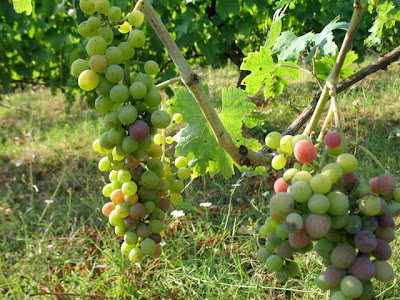
Walking the vineyard again, I am dropping half of the half of the clusters left on the vines because of the oidio damage. Damaged grapes will not make good wine. And I’d rather do the culling now so I won’t have to do it when I harvest or explain how to tell what’s good from bad to anyone who helps. And I don’t want the sick bunches infecting what’s left of the good.
In the end, who knows how many good grapes we’ll be able to harvest. Right now we are down to a quarter of what I estimated in the spring. But now I have a new problem.

With the grapes all ripening at different rates I will not be able to harvest them all at the same time or begin a single vat fermentation as I had planned, and, from the looks of it, they could reach the stage of ripeness weeks apart. This means I either have to ferment several small batches or keep adding grapes to the primary fermentor over a graduated harvest. The first option is tedious, requires much more equipment, and is guaranteed to render inconsistent results. The latter risks contaminating the single batch each time I add grapes. What to do?!?
For now, my plan is to ferment in two batches and to pick within a ripeness bracket where the grapes that ripen first are not too ripe and the ones that ripen later not unripe. This involves measuring both the sugar and the acid in the grapes, but I will come to this later.
Meanwhile, since I can no longer spray copper sulfate to control the oidio once veraison softens the grapeskins, I can only hope the oidio doesn't return with the fogs of autumn and enough good grapes make it to harvest to make at least a little wine.
I am not a praying man. But I am beginning to see how one becomes one.




No comments:
Post a Comment